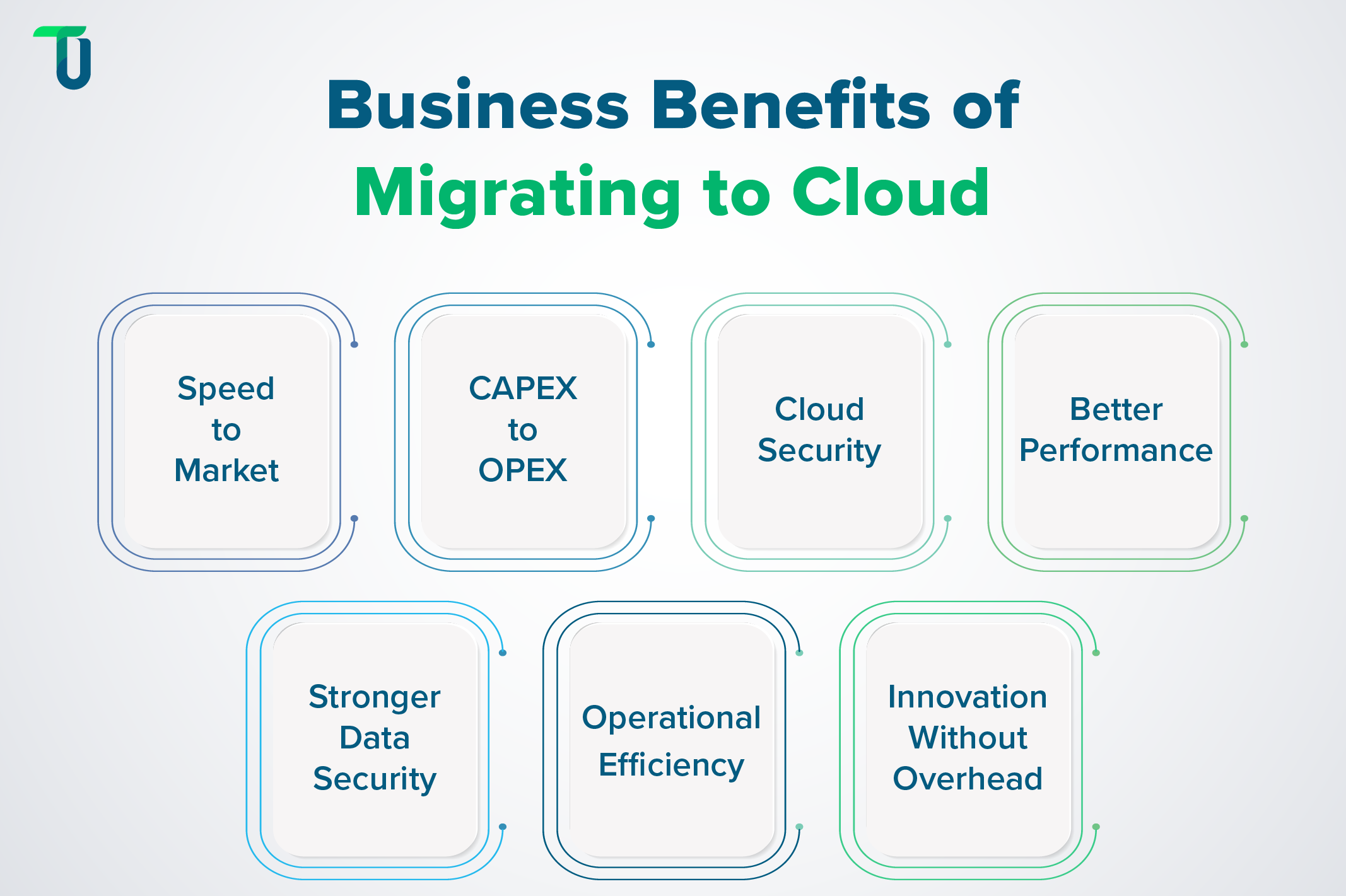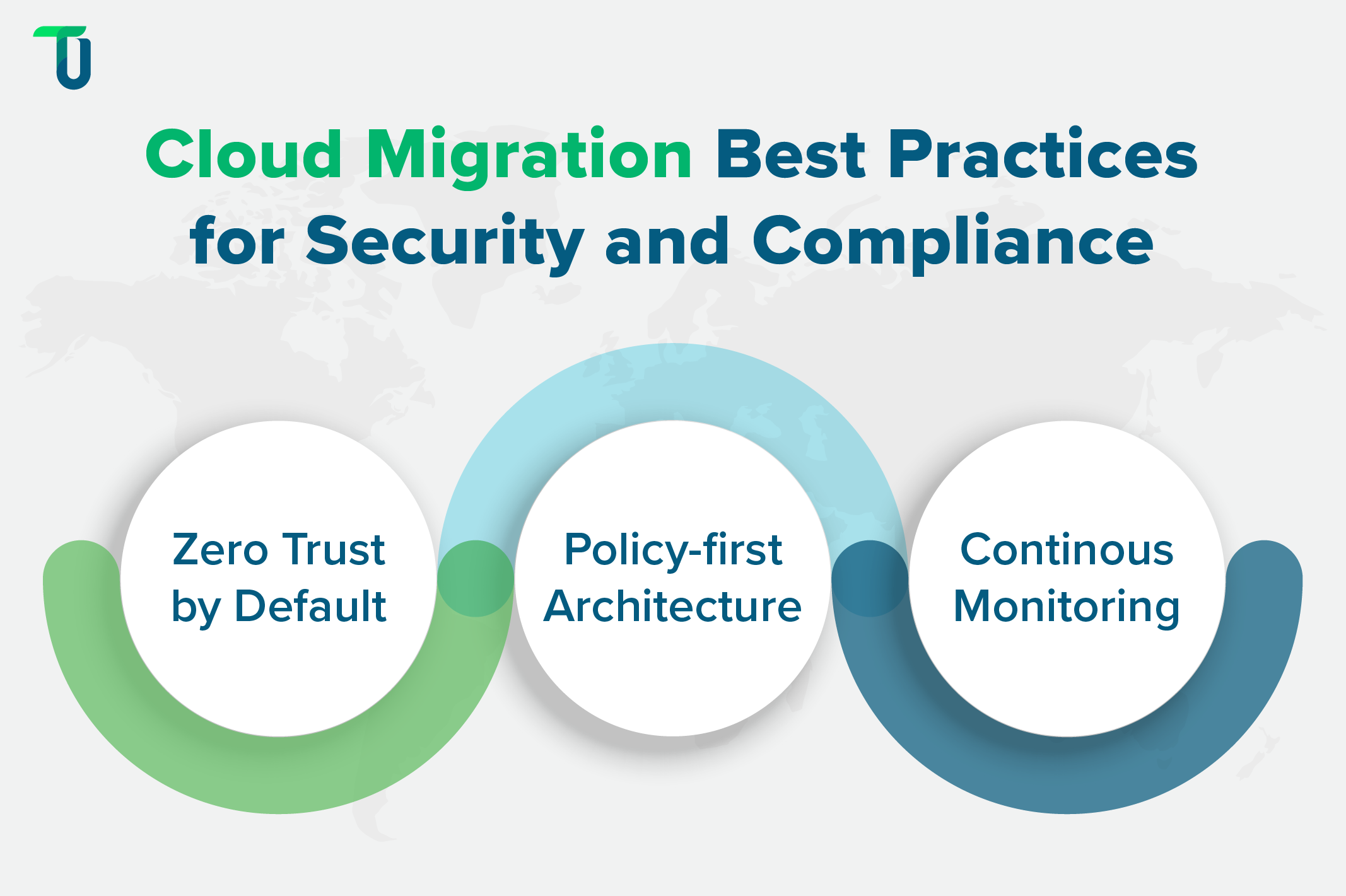Why Are Businesses That Delay Cloud Migration Falling Behind?
Staying on legacy systems may feel safe. But it’s expensive. You pay for hardware, software, updates, and physical space. Add to that the cost of downtime, slow performance, and manual maintenance. Security is another issue. On-premise systems need constant patching. One missed update can open the door to breaches. In short—you're spending more to get less.
Whereas the cloud helps you move fast. It gives you access to the latest tools, automation, and AI without the overhead. You can scale up or down as needed. No waiting. No delays. With the cloud, teams work better, apps run faster, and data drives real-time decisions. That’s how businesses stay ahead. In today’s world, agility wins. Cloud migration gives you the edge.
The True ROI of Cloud Migration: Why It’s More Than Just Cost Savings
Most leaders look at the cloud for one reason—cost savings. And yes, that’s part of the ROI. But it’s just the beginning. Here’s what the real ROI looks like.

Speed to Market: Cloud cuts down deployment time from weeks to hours. You don’t wait for infrastructure. You launch faster, test faster, and scale faster. This speed gives you a clear edge. While others plan, you're already in the market.
OPEX vs CAPEX: How cloud reduces financial risk? With proper cloud migration planning, you move from big upfront costs (CAPEX) to flexible, usage-based spend (OPEX). You pay for what you use—nothing more. No wasted capacity. No sunk costs. That’s why smart CFOs prefer the cloud. It’s lean, agile, and far less risky.
Cloud Security: Cloud providers offer multi-layered protection—from encryption and firewalls to continuous monitoring. You get built-in compliance, automated patching, and zero-trust architecture. That’s stronger security than most on-premise setups can ever match.
Better Performance, Less Downtime: Cloud platforms offer high availability. Apps run smoother. Data loads faster. No surprise outages. This means better customer experience—and fewer fire drills for your team.
Stronger Data Security Posture: Modern cloud platforms invest billions in data security. With the right cloud migration strategy, you get built-in compliance, automated backups, and real-time threat detection. That’s not just safer. That’s smarter.
Operational Efficiency: Cloud frees up your IT team. No more chasing server issues or managing outdated systems. Now, your team can focus on what matters—building new features, improving systems, and driving innovation.
Innovation Without the Overhead: Want to use AI, machine learning, or advanced analytics? In the cloud, it’s all plug-and-play. You don’t need a separate team or huge budgets. You just need the right cloud setup.
Cloud migration isn’t a cost-saving project. It’s a business-growth enabler. The ROI is real—and it shows up in speed, security, and scalability.
Start Your Cloud Migration with Confidence
Our cloud expert can help you! No guesswork. No chaos. Just a clear plan that works
Cloud Security Nightmares: What No One Tells You Before Migrating
Cloud security can feel like a black box. Most teams focus on the move. But what happens after the migration is where real risks show up. Here’s what no one tells you.
Misconfigurations Are the Silent Killers: The biggest threat? Human error. One wrong setting. One open port. One missed policy. And suddenly, your data is exposed. These aren’t rare mistakes—they’re common.
Fix it:
Set up role-based access. Automate configuration checks. Use cloud-native tools to scan for weak spots. Don’t trust “done.” Trust audited and monitored.
Shadow IT Grows Fast—And Quietly: When teams move to the cloud, they move fast. Tools, apps, and platforms pile up. But without proper guardrails, this leads to shadow IT—systems no one owns, no one tracks, but everyone uses. That’s a security breach waiting to happen.
Fix it:
Define clear cloud usage policies. Monitor all workloads. Bring IT and business teams together to review tools regularly. Control doesn’t mean slowing down. It means staying safe while moving fast.
Data Residency and Compliance Gaps: Not all data can live anywhere. Different countries have different rules. In a rush to migrate, companies forget about data residency, GDPR, and industry regulations. The result? Fines. Investigations. Reputational damage.
Fix it:
Work with cloud partners who understand compliance by design. Set up policies based on geography, industry, and risk. This should be part of your migration plan—not an afterthought.
How Fortune 500 Companies Get It Right
Enterprises with complex operations and high stakes don’t take cloud security lightly. They build it into their cloud strategy from day one. Here’s how Fortune 500 companies stay secure and compliant at scale:

Zero Trust by Default: They assume no one is trusted by default—inside or outside the network. Every user, device, and system must prove its identity before accessing resources. It’s not about blocking—it’s about verifying every step.
Example:
Google uses its own Zero Trust model, BeyondCorp, which removes the concept of a traditional perimeter. Employees can work securely from any location without relying on VPNs.
Policy-First Architecture: Security isn’t bolted on later. It’s part of the architecture. Fortune 500 companies define compliance rules and security policies before workloads go live. These rules control where data lives, who can access it, and how it’s handled.
Example:
Johnson & Johnson uses a policy-first approach for cloud deployments to meet HIPAA and FDA requirements. They build governance into their DevOps pipelines using Infrastructure as Code (IaC). This keeps every deployment compliant—by default, not by exception.
Continuous Monitoring: They don’t wait for quarterly audits to detect issues. They use real-time analytics and AI-driven tools to monitor everything—apps, endpoints, user behavior, network traffic. This helps them catch threats early and stay proactive, not reactive.
Example:
Capital One moved to AWS and built a centralized cloud security platform. It uses continuous monitoring, encryption, and automated alerting to detect real-time anomalies.
From Chaos to Clarity: The 5 Pillars of a Smooth Cloud Migration
Cloud migration isn’t just a tech shift—it’s a full-scale transformation. And without a clear structure, things can spiral quickly. Miss one step, and you’re dealing with delays, cost overruns, or worse, a half-baked cloud setup that never delivers value. These five pillars can help you build a solid foundation—turning a chaotic move into a clean, strategic leap.

Cloud Readiness Assessment: Before you move anything to the cloud, you need a clear picture of what you’re working with. Think of this as an X-ray scan of your IT environment. It shows you what’s cloud-ready, what needs refactoring, and what might better stay on-premise for now.
A good readiness assessment looks at infrastructure, applications, data, dependencies, security posture, and compliance requirements. For example, imagine a large healthcare organization undergoing a cloud-readiness assessment. During the scan, the team discovers that nearly a third of its applications, like static IPs and local file paths, contain hardcoded configurations that wouldn’t function properly in the cloud. By catching these issues early, they’re able to refactor the apps before migration, avoiding costly rework, delays, and user frustration.
Skipping this step is like moving house without checking if the new place has electricity or plumbing. You need clarity before you act.
The DevOps Advantage: DevOps often get framed as a post-migration benefit. In reality, it’s a core driver of migration success. When your development and operations teams are aligned and automation is part of your pipeline, everything from provisioning to deployment becomes faster and more secure.
DevOps lets you test workloads in cloud sandboxes, catch issues early, and ensure that security is baked into every phase—CI/CD, code reviews, and infrastructure setup. Take BT Group, for example. By embedding DevOps into their cloud migration and automating over 90% of deployment tasks, they cut deployment time from days to just 10 minutes—speeding up delivery without compromising service quality.
With DevOps, migration timelines shrink, and release cycles speed up—without compromising on quality or control.
Preparing Your People for the Cloud: The biggest blocker to cloud adoption isn’t the tech—it’s the people. Teams that aren’t prepared, trained, or aligned will resist the change. And that resistance shows up as stalled projects, shadow IT, or even costly rework.
That’s why change management is a core pillar. You must guide teams through what’s changing, why it matters, and how they’re supported during the shift. Upskilling initiatives, internal cloud bootcamps, and cloud champions within departments can make all the difference.
One notable example is Telstra, which established its own 'cloud guild' to train over 4,000 staff members on AWS cloud technologies by 2025. This strategic move underscores Telstra's commitment to equipping its workforce with the necessary skills to effectively navigate and leverage cloud technologies.
Strong Governance and Access Control: In the cloud, it’s easy for teams to move fast—and that’s the problem. Without governance, you have resource sprawl, inconsistent access rights, and unmanaged data across regions.
Fortune 500s manage this with policy-first thinking; you can check the example above for Johnson & Johnson. They define who can provision what, how workloads must be tagged, and what data protection rules apply. Tools like AWS Control Tower or Azure Policy enforce these rules automatically so teams can innovate within boundaries.
Strong governance doesn’t slow down progress—it protects it.
Post-Migration Optimization: A lot of companies think migration ends once workloads are live. But if you stop there, you’re likely overspending, underperforming, or missing out on cloud native features.
The real value of the cloud shows up after migration—when you start right-sizing instances, shutting down idle resources, and optimizing spending. Netflix, for example, saved significantly by optimizing their AWS usage after migration—leveraging spot instances, autoscaling, and right-sizing EC2 resources to improve performance and reduce costs.
Post-migration is where cloud maturity begins. It’s when you move from just being in the cloud to genuinely leveraging it.
AI, Automation, & The Cloud: Why They’re a Power Trio for Future-Proofing Your Business
The cloud is powerful. But when you layer AI and automation on top of it, something game-changing happens. Suddenly, it’s not just about where your workloads run. It’s about how smart they run, how fast they adapt, and how much value they unlock without adding headcount. This trio—AI + Automation + Cloud—is fast becoming the core engine for digital-first enterprises.
AI-Powered Automation Is Changing the Game for Cost Optimization
Let’s be honest: Cloud costs are rising. And traditional optimization methods just can’t keep up. That’s where AI comes in. AI-driven tools are now analyzing usage patterns across your cloud accounts. Without human intervention, they can predict traffic spikes, auto-scale infrastructure, and even shut down idle resources in real time. Instead of waiting for an ops team to review bills at the end of the month, AI catches waste as it happens.
Platforms like AWS are already doubling down on this. In a recent interview, AWS CEO Matt Garman explained how AI will soon become the brain of cloud cost efficiency—automating spend management and infrastructure decisions. In other words, the cloud will know when to save you money—before you even ask.
The Future Is Autonomous, Not Manual
AI and automation aren’t trends. They’re a direction. The world is moving toward self-optimizing systems—where the cloud doesn’t just run your business but thinks for it. Whether it’s smarter scaling, predictive cost control, or intelligent incident response, AI, automation, and cloud are reshaping what “operations” even mean. The companies embracing this shift? They’re not just saving costs. They’re buying time, gaining agility, and future-proofing every layer of their stack.
Migrate to Cloud Smarter, Not Just Faster with Tenup
Cloud migration isn’t just a one-time project. It’s a business shift. To get it right, you need more than tools. You need a team that knows the path, sees the risks, and removes the guesswork. That’s where we come in. At Tenup Software Services, we help you migrate with confidence—without disrupting your business
Our comprehensive cloud migration services start with a deep assessment of your current systems. No assumptions. Just clear analysis. This gives us the blueprint for a migration plan that works—for your apps, your team, and your timeline.
Then, we help you pick the right cloud—whether that’s IaaS, PaaS, or SaaS—based on what you need. Not what’s trending. We design your cloud data migration strategy and migrate your data with care. No data loss. No downtime. Just secure, fast transfers from on-premise to cloud.
Our team also takes care of application refactoring or replication, making sure your apps are ready for the cloud environment without breaking functionality. Before we go live, we run end-to-end testing. We don’t guess. We validate. So, when your app hits the cloud, it just works.
And finally, we lock down your network and cloud security—using modern protocols to protect every connection. Whether you're just exploring the cloud or ready to start moving, we help you go from legacy to cloud-ready—with speed, stability, and security. The cloud is the future. Let us help you own it.
Migrate Securely. Scale Smarter.
Your apps deserve more than just a lift-and-shift. We can design a custom cloud migration strategy around your goals, workloads, and timeline.
Frequently asked questions
What are the different types of cloud migration strategies?
The most commonly used cloud migration strategies, referred to as 7 Rs, include Rehosting, Relocating, Replatforming, Repurchasing, Refactoring, Retiring, Retaining.
How do I choose the right cloud service provider for migration?
During cloud migration planning, evaluate factors like cost, scalability, security features, and compliance certifications of multiple cloud providers like AWS, Microsoft Azure, Google Cloud Platform, etc., and choose based on your business needs.
What is the typical timeline for a cloud migration project?
The duration of your on premise to cloud migration project can vary based on the complexity and size of the migration including data, apps, infrastructure, etc., but having a clear project plan and milestones can help manage expectations.
How can I ensure data integrity during cloud migration?
Implementing robust data validation and verification processes ensures that data remains accurate and uncorrupted throughout the cloud migration process.
What are the common challenges faced during cloud migration?
Common cloud migration challenges include data security concerns, potential downtime, application compatibility issues, and managing costs effectively.
How does cloud migration impact compliance with industry regulations?
Cloud migration enhances compliance by utilizing cloud providers' security features and certifications like GDPR and HIPAA. Use automated tools to maintain up-to-date compliance, reducing manual oversight and minimizing risk.
What is the cost implication of migrating to the cloud?
While cloud migration can lead to cost savings in the long run, initial cloud migration costs may include migration tools, potential downtime, and training for staff.
How do I train my staff for a smooth transition to the cloud?
Providing comprehensive training programs and resources can help employees adapt to new cloud-based systems and workflows effectively.
Can I migrate legacy applications to the cloud without major modifications?
Some legacy applications may require refactoring to function optimally in a cloud environment, while others can be rehosted with minimal changes.
What are the best practices for post-migration optimization?
Regularly monitoring performance, optimizing resource allocation, and staying updated with the latest cloud features can help maximize the benefits of cloud migration.

